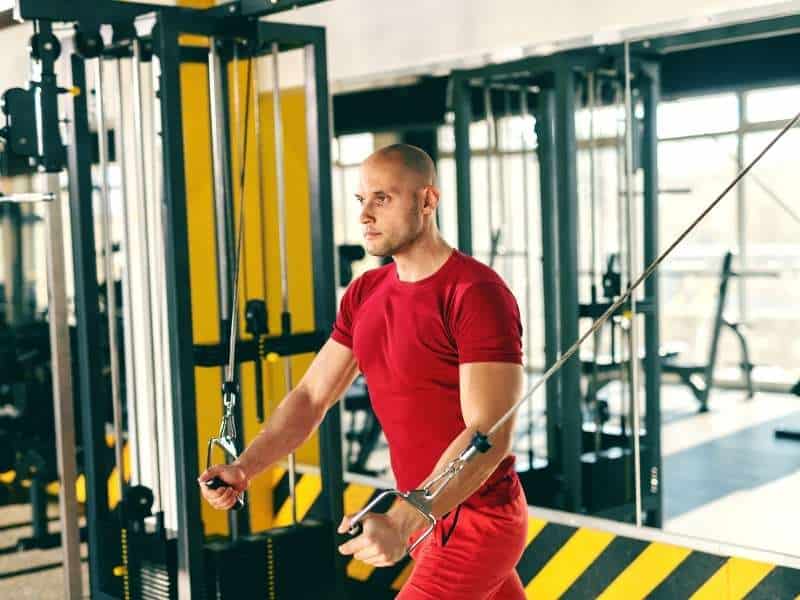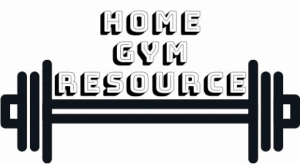Functional trainers are very versatile but also expensive pieces of gym equipment. You want to keep it in the best shape possible so it’ll last you a long time. How can you maintain your functional trainer to keep it in tip-top shape for the longest? Let’s find out.
The most important maintenance points to keep a functional trainer in good shape are;
- Cleaning: All surfaces with damp non-abrasive cloth
- Maintaining proper cable slack
- Replacing cables if the mantle is frayed
- Replacing pulleys if the bearing is worn
There are some things you can do to prevent wear on your functional trainer so even the wear parts last longer. Almost nothing with moving parts will last a long time if you don’t maintain it properly.
Contents
Functional trainer maintenance
For how versatile a functional trainer is, maintenance is actually pretty easy. Especially if you compare it to something like a treadmill. Let’s see what you have to do to keep your machine working well;
- Cleaning
- Frame and stack maintenance
- Cable maintenance
- Pulley maintenance
- Pulley rail/guide rod maintenance
- Placement
Suggested: How long should a functional trainer last?
Below you’ll find a more in-depth description of what to do.

Cleaning
Regular cleaning is important to keep your functional trainer in good shape. Just use a non-abrasive cloth and water with a mild detergent to wipe everything down. Especially the parts you touched and where sweat gathers. It’s best to do a quick wipe-down after every workout and do a more in-depth cleaning every week.
Clean the attachments regularly to avoid the bad effects of leaving sweat on them, especially the nylon and rubber parts can get quite dirty.
All the surfaces should be wiped down to get rid of any dust and dirt. Once a year remove any shrouds to get rid of all the dust that builds up in places you couldn’t otherwise get to.
Cables should be cleaned of any dust and dirt as well. Especially the parts that contact the pulleys during exercise. The pulleys themselves should be kept clean too. Sometimes dust can build up next to the pulleys where it’s very difficult to get to. Don’t use a lot of water to clean this. Rather use a very thin brush or remove the pulleys once year to really clean them well. That’s a good time to check the pulley bearings as well. Bearings should rotate smoothly and pretty easily without any tougher and easier spots.
Frame and weight stack maintenance
The frame and weight stack don’t really need any maintenance. Corrosion is really the only thing that’s going to damage the frame and weight stack. Put your functional trainer in a place that doesn’t get wet and keep an eye on the coating of the metal.
If you live in a flood area and the machine got wet, its possible water got to the inside of the tubing. The inside is usually not as well protected against corrosion as the outside. The water can get in because the tubing is usually capped off with a plastic or rubber cap. While this is good enough to keep things out in normal conditions, in case of a flood this might not be enough. When water gets inside, the tubing can start corroding from the inside. You won’t see this but it’ll still weaken the frame. That’s a less than ideal situation.
If you think water got inside the tubing, take off the end caps (this can be difficult) and let it dry out properly. This will take a while.
Also, the pillar the pulleys slide on is filled with holes. Water will certainly get in through there although those pillars are usually chromed and the holes make evaporation possible so over time they will dry out. If the machine didn’t only get wet but also dirty in the flood, consider taking it apart completely, cleaning everything, letting it dry out, and then reassembling with proper lubrication where necessary.
Suggested: How long do functional trainers last?
Cable maintenance
The cable should be adjusted to have minimal but still some slack in it. There should be a few millimeters of slack in the cable with the weight stack down. Adjustments will have to be made semi-regularly but more when the cable is new and still stretches.
The cable should be cleaned regularly as described above but doesn’t have to be lubricated. There is very little friction in the cable path that would need lubrication. The cable touches the pulleys but the pulleys should roll so there is no actual friction.
The nylon cover of the cable can wear over time though. If the cover is damaged, the cable should be replaced. A frayed mantle is only going to get worse over time and exposes the metal core to corrosion which weakens it. Having a cable with an exposed core also won’t feel smooth and can cause damage to the pulley wheel.
Read more about gym machine cable replacements here.
Pulley maintenance
The pulleys don’t require any maintenance except cleaning. Keep them clean, especially between the pulley housing and the wheel. Lubricating the cable and outside of the pulley is not necessary. The bearings are lubricated from the factory and closed to the environment but the grease inside can deteriorate over the course of a few years.
You can try lubricating the bearing but this will take some time, effort, and dirty hands. If you’re mechanically inclined, give it a try, it’s cheap to do. However, in most cases if the pulley stops rotating smoothly it’s already too late, the bearing is worn and you’re better off replacing the whole thing.
Also, opening a bearing will void any warranty that part might have had.
Suggested: Should you lubricate a cable machine pulley?
Guide rod/pulley rail maintenance
Things that should be regularly lubricated are the guide rods the weight stacks slide on and the rail the pulley slides on. Both of those are chromed pieces of metal. The chrome makes it smooth so things slide on it easily.
Clean these rails with a clean, non-abrasive cloth regularly to get rid of dust and dirt particles. Then lightly lubricate with a dry silicone lubricant. You can do this by spraying some on another cloth and rubbing it all over the metal rails to spread it out. Spraying directly onto the rails and wiping off the excess is an option but a bit messier.
Read more about guide rod lubrication here. The procedure for the pulley rails is the same.
Placement
Before you even touch a functional trainer you should carefully think about where to put it. Things you want to avoid;
- High humidity
- Moisture
- UV light
- Extreme temperatures
- Dusty environments
While most home gyms are built in the garage or basement, those aren’t the best places to keep gym equipment in good shape. They can be pretty humid and sometimes dusty. They are good at protecting against extreme temperatures and UV light though. As long as you keep your basement/garage reasonably dry and clean, your functional trainer will be fine as long as you stay on top of maintenance.
It’s always a good idea to put a functional trainer (or any gym equipment for that matter) on top of good gym flooring. Rubber mats at least ½” thick are the best option. Gym flooring is better for your equipment since it helps keep away dirt.
Gym flooring is also good since it’s much easier to keep hygienic, it provides more grip for the exerciser, protects the floor underneath, and dampens noises.
Warranty
No matter how well you maintain your things. Something can always go wrong. And when it does, it’s good to have a functional trainer that’s backed up by good warranty condition.
Some manufacturers provide a lifetime warranty on their functional trainers (for residential use). If you’re worried about the lifespan of a functional trainer, that type of warranty is certainly something to look out for.
If a manufacturer only provides a 5-year warranty on the frame on a machine that’s as expensive as a functional trainer, you should probably ask yourself why that is the case if others are providing lifetime warranties.
However, even the lifetime warranties do not include wear parts like; cables, pulleys, and attachments.
Check out the BodyCraft functional trainers. They’re well-built and all of them have a lifetime warranty on everything except wear items.
Best Cable Machine Accessories
Make your cable trainer experience even better with these accessories.
- Attachments: No cable machine is complete with a good set of attachments. Click here to find the best set of attachments
- PlateMate: One or two platemates (Amazon link) can help you increase the weight more gradually on your weight stack. Just stick them onto your weight stack.
- Bench: A good adjustable weightlifting bench like the CAP Deluxe (Amazon) adds many exercise options to a cable machine like bench presses and shoulder presses.
Find the most complete functional trainer that includes most of these accessories by clicking here.

